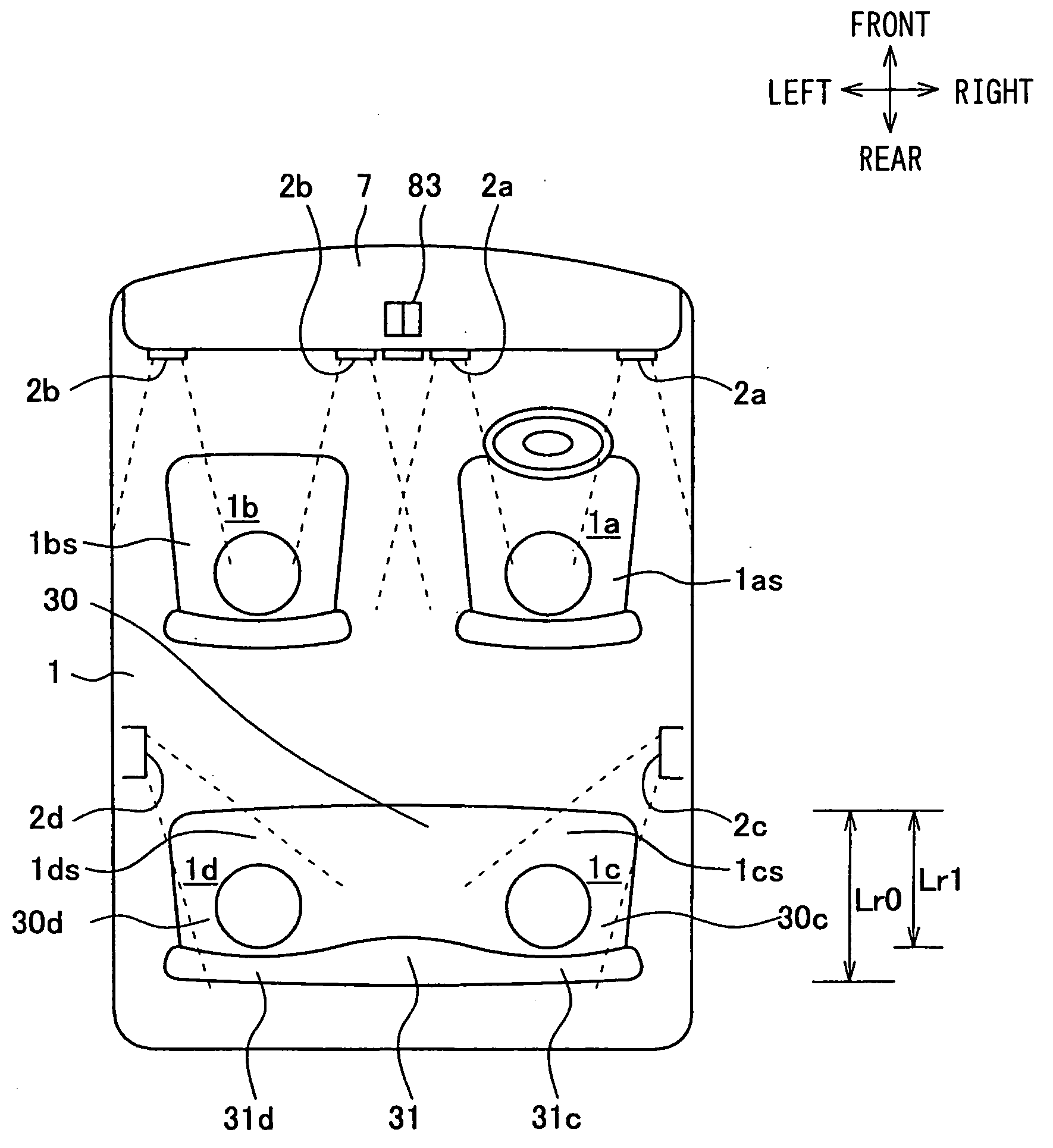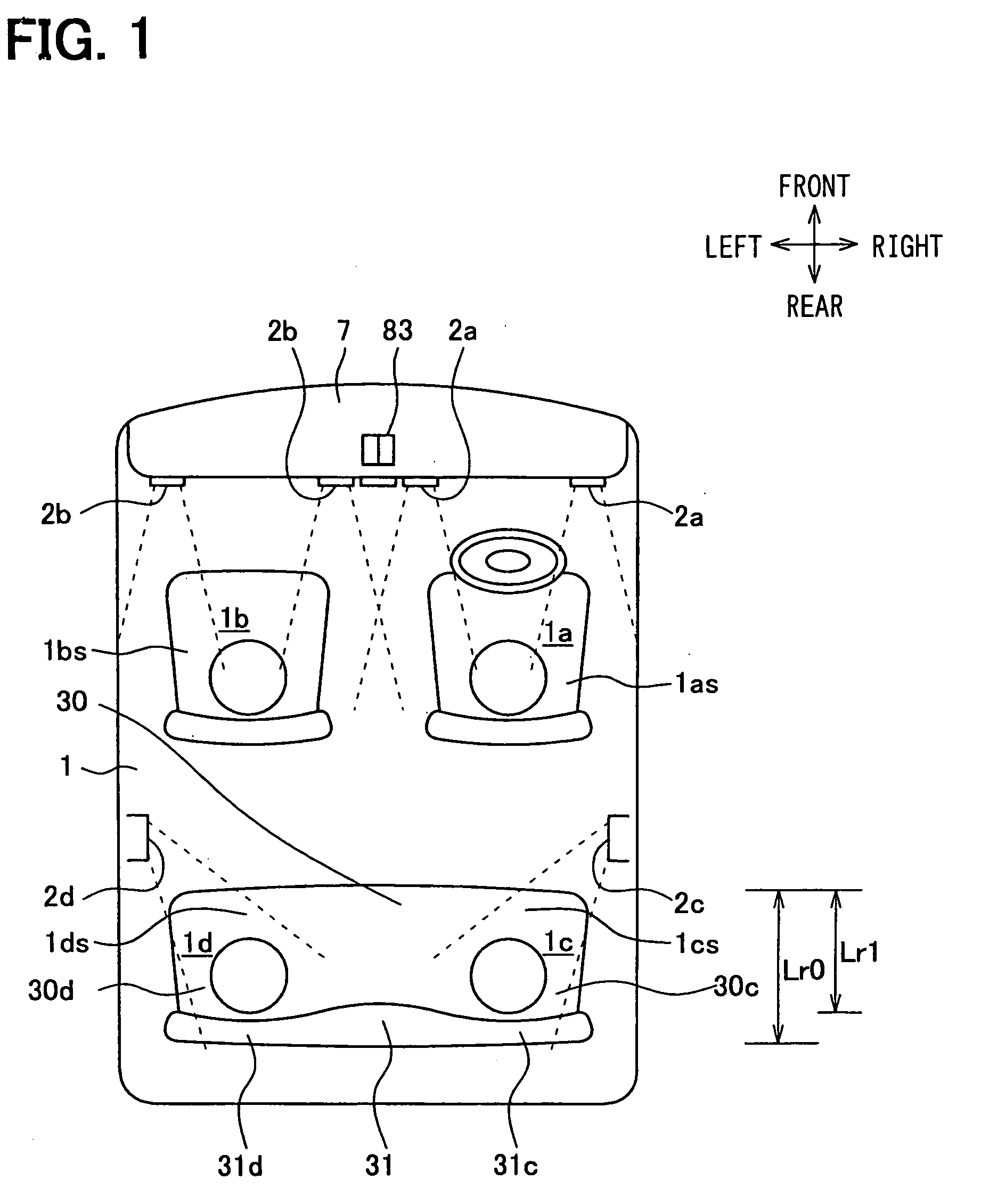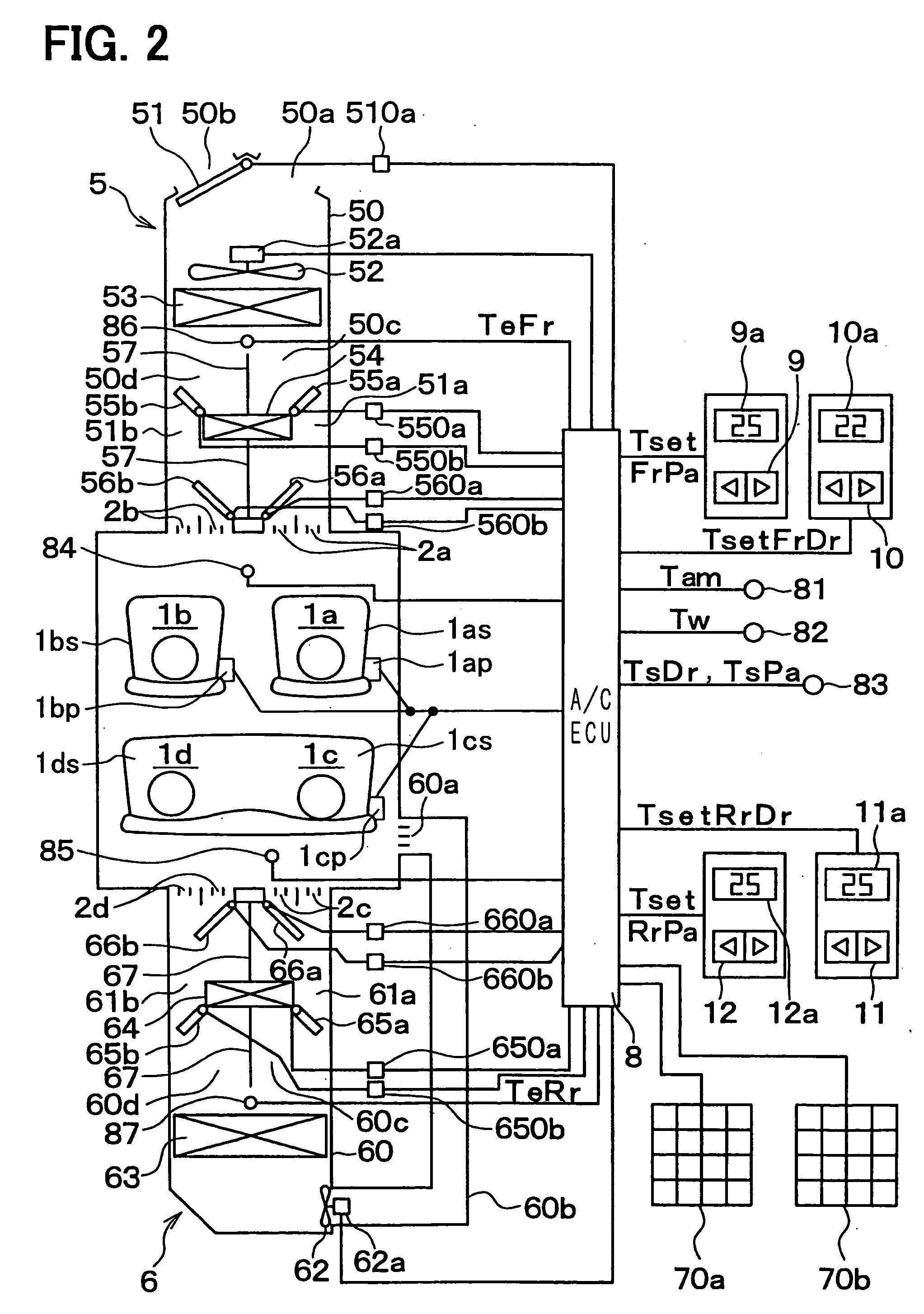Temperature detection device and vehicle air conditioner using the same
a temperature detection device and temperature sensor technology, applied in the direction of ventilation systems, heating types, instruments, etc., can solve the problem that the rear ir sensor cannot stably detect the surface temperature of the passenger on the rear sea
- Summary
- Abstract
- Description
- Claims
- Application Information
AI Technical Summary
Benefits of technology
Problems solved by technology
Method used
Image
Examples
first embodiment
(First Embodiment)
[0050] The first embodiment of the present invention will be now described with reference to FIGS. 1-10. In the first embodiment, the present invention is typically applied to an air conditioner for a vehicle for independently controlling each of air-conditioning operations of air conditioning zones 1a, 1b, 1c, 1d located leftward and rightward on the front seat side and located leftward and rightward on the rear seat side within a vehicle compartment interior 1 (passenger compartment).
[0051]FIG. 1 is a schematic diagram showing the arrangement of the air conditioning zones 1a, 1b, 1c, 1d. The air conditioning zone 1a is located on the right-hand side in the front seat air conditioning zone. The air conditioning zone 1b is located on the left-hand side in the front seat air conditioning zone. The air conditioning zone 1c is located on the right-hand side in the rear seat air conditioning zone. The air conditioning zone 1d is located on the left-hand side in the re...
second embodiment
(Second Embodiment)
[0160] The second embodiment of the present invention of the present invention will be now described with reference to FIGS. 11-13. In the second embodiment, the structure of matrix sensors 70a, 70b that are a non-contact temperature sensor 70 is different from that of the above-described first embodiment.
[0161] As shown in FIG. 11, the non-contact temperature sensor 70 of the second embodiment includes the right matrix IR sensor 70a arranged to face toward the rear right passenger RrDr, and the left matrix IR sensor 70b arranged to face toward the rear left passenger RrPa. The right matrix IR sensor 70a and the left matrix IR sensor 70b are arranged on the ceiling portion adjacent to each other. The matrix IR sensors 70a, 70b are contained in a single package (casing), and the package is arranged at a suitable position in the passenger compartment. Both the matrix IR sensors 70a, 70b have the same structure.
[0162] Infrared rays, radiated from a detecting subjec...
third embodiment
(Third Embodiment)
[0180] The third embodiment of the present invention will be now described with reference to FIGS. 14, 15A and 15B.
[0181] In the above-described first embodiment, the air conditioning control for each front air conditioning zone 1a, 1b is performed without using the detected surface temperature of the non-contact temperature sensor. However, matrix IR sensors 70c, 70d having the same structure as the matrix IR sensors 70a, 70b of the first embodiment can be used for the air conditioning zones 1a, 1b. In this case, an air conditioning control for the air conditioning zone 1a and an air conditioning control for the air conditioning zone 1b can be respectively independently performed by using the surface temperatures detected by the matrix IR sensors 70c, 70d.
[0182] As shown in FIGS. 14, 15A and 15B, the matrix IR sensor 70c is disposed in the ceiling portion at a position Rcf above the front right passenger in a range Lf0, on a front right window side from the cent...
PUM
 Login to View More
Login to View More Abstract
Description
Claims
Application Information
 Login to View More
Login to View More - R&D
- Intellectual Property
- Life Sciences
- Materials
- Tech Scout
- Unparalleled Data Quality
- Higher Quality Content
- 60% Fewer Hallucinations
Browse by: Latest US Patents, China's latest patents, Technical Efficacy Thesaurus, Application Domain, Technology Topic, Popular Technical Reports.
© 2025 PatSnap. All rights reserved.Legal|Privacy policy|Modern Slavery Act Transparency Statement|Sitemap|About US| Contact US: help@patsnap.com



